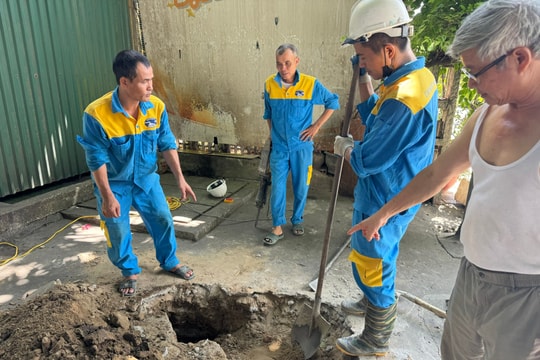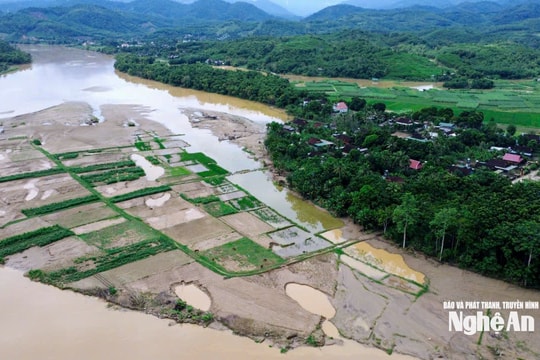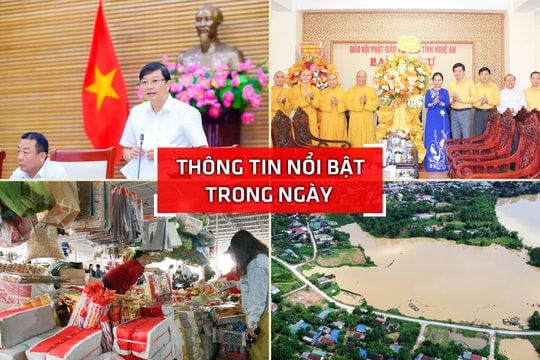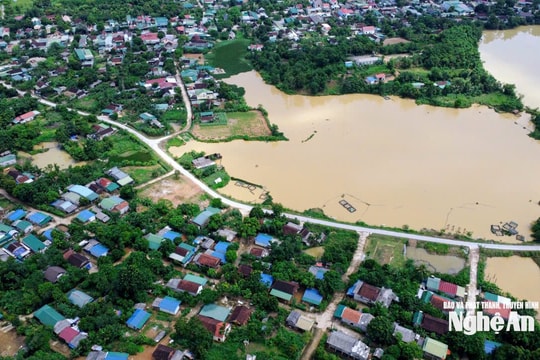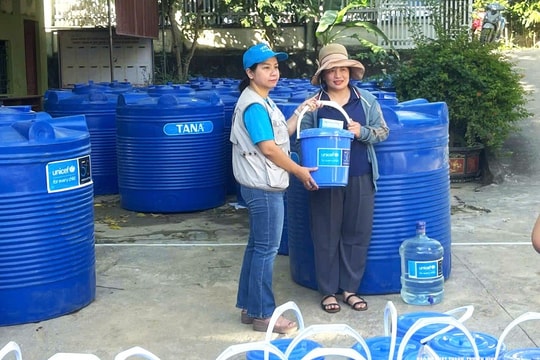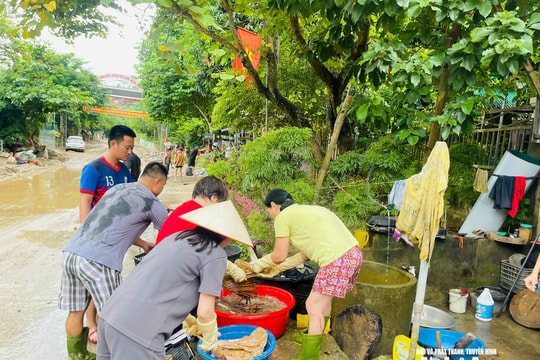Provincial People's Council intervenes to remove obstacles in the Hua Na hydropower resettlement area
(Baonghean) - The Hua Na hydropower resettlement area (Que Phong) has long had a number of problems that have been petitioned by voters to the Provincial People's Council forum.
Recently, the Standing Committee of the Provincial People's Council organized a meeting between all levels, sectors, people and investors to unify some solutions.
Lack of productive land and clean water
Hua Na Hydropower Project has a designed capacity of 180 MW, with a total investment of more than 7,092 billion VND, invested by Hua Na Hydropower Joint Stock Company (under the Vietnam Oil and Gas Power Corporation). The project started construction in March 2008 and generated electricity in February 2013. To implement this project, 1,362 households with 5,236 people in 14 villages in 2 communes of Dong Van and Thong Thu (Que Phong) had to relocate. In addition to 484 households with the need for free resettlement, 878 households were resettled at 13 locations in 3 communes of Dong Van, Thong Thu and Tien Phong of Que Phong district.
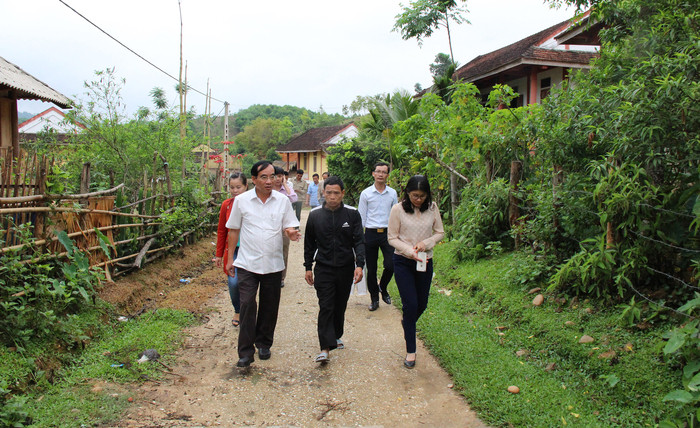 |
| The Provincial People's Council delegation surveyed the Hua Na resettlement area. Photo: Mai Hoa |
Studying the implementation process of the Hua Na hydropower resettlement project, we found that from the survey work to the planning, public planning, and propaganda work were carried out quite systematically. The resettlement policies according to regulations were propagated to each household and were basically implemented completely and quite promptly. Overall, it can be affirmed that the living conditions and appearance of the residential areas in the 13 Hua Na hydropower resettlement sites were better than the old places.
However, there are still many problems and limitations surrounding the Hua Na hydropower resettlement area, which have been reflected and petitioned by voters and people many times to the Provincial People's Council forum.
To have an objective and comprehensive view of the difficulties and problems, and to find effective solutions to the backlog of these resettlement areas, the Standing Committee of the Provincial People's Council recently had a meeting with the People's Committee of Que Phong district, Hua Na Hydropower Joint Stock Company and representatives of the people, including leaders of the Provincial People's Committee. This is a new form of activity of the Provincial People's Council according to the provisions of the Law on Supervisory Activities of the National Assembly and People's Councils in 2015.
At the explanation session, based on the discussion between the parties, it was found that the biggest problem affecting the immediate stabilization of people's lives and ensuring long-term sustainability is the difficulty and problems in allocating land to people. Mr. Ha Van Phuoc - Head of Pieng Cu 2 Committee (Tien Phong Commune), representing households at the first resettlement site of the Hua Na Hydropower Project, raised the issue: The biggest difficulty for resettled people at present is the lack of land for production.
Mr. Phuoc said: "Mountain people live on forests and land, but when they go to resettlement areas, the production land is too narrow, on average each household only has 0.8 - 0.9 hectares of production land. Particularly for forest land, although Hua Na Hydropower Joint Stock Company has compensated and recovered land from local people to hand over to resettlers, the local people - Na Chang village, Tien Phong commune - have not yet handed over the land to resettlers but still distributed land to grow acacia on it."
In addition to the problem of some land disputes between local people and resettled people; the lack of consensus among organizations in creating conditions for people to organize production on the allocated land, the biggest problem for this resettlement area is that the progress of land allocation for resettled people is generally very slow. This problem was confirmed by Mr. Lang Van Minh - Vice Chairman of Que Phong District People's Committee and said that up to this point, out of 13 resettlement points, only 4/13 resettlement points have been allocated rice fields with an area of only 11.62 ha/15.32 ha of the area required to be allocated.
The remaining area that needs to be allocated is still very large, including 57.78 hectares in 9 villages that have not been allocated and 3.7 hectares in 4 villages that are still under-allocated. Regarding forestry land, the allocation in the field has been carried out to 567/878 households with a total area of 1,910/7,616 hectares. Thus, the area of forestry land that needs to be allocated but has not been allocated is also large, with 5,706 hectares and 311 households in 5 resettlement sites have not received a single square meter of forestry land.
Along with the production land, there are still some problems at the resettlement sites. For example, at the two resettlement sites of Pieng Cu 2 and Huoi Siu - Huoi Lan, according to the reflection, the clean water facility built by the Hua Na hydropower project was built in 2011, but since then, users have not been able to use it.
Need to strengthen coordination
Obviously, the biggest problem in the Hua Na hydropower resettlement area is the slow allocation of production land to the people. From the discussion between the local government, the investor and the people, it is shown that the reason for the slow allocation of forestry land is due to the capacity of the consulting unit. For the slow allocation of rice fields due to the slow restoration work, at first there was a "complication" between the district and the investor in determining the unit price for restoration (because it was handed over to the people to restore themselves).
On the other hand, when surveying resettlement sites, there were streams and water basins that were very good, but the process of resettlement construction due to digging, partly due to climate change, many previous water sources were reduced or completely lost. This led to the entire original planning of rice fields being broken, there were places that could no longer be reclaimed due to lack of water sources.
To overcome this situation, recently, the People's Committee of Que Phong district and the investor have surveyed and deployed a number of new wet rice production sites, but because the distance between the residence and the wet rice field planning site is too far, in some places about 9 km; in some places the road is steep, causing difficulties in traveling for people, so some people have not received it. However, in some resettlement sites, there is still a deadlock in finding a place to reclaim wet rice fields.
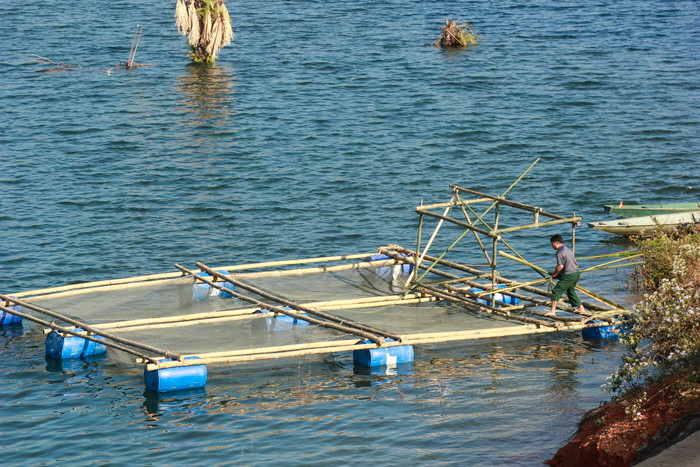 |
| Cage fish farming on the Hua Na Hydropower Reservoir (Que Phong). Photo courtesy |
To solve the above problems, according to some opinions at the explanation session, it is necessary to review and re-evaluate the consulting unit. If it is not guaranteed, it is possible to replace another consulting unit to speed up the land allocation for the people. Regarding rice fields, the handling direction, according to Mr. Lu Dinh Thi - Secretary of the District Party Committee, Chairman of the People's Council of Que Phong district, is not necessary for every resettlement site to have rice fields; where it is convenient, it should be done, where it is not convenient, it is necessary to study and calculate that it is possible to replace other cultivated land, as long as it ensures the people's lives.
Regarding the solution of clean water for resettled people, Mr. Hoang Van Thanh - Deputy Director of Hua Na Hydropower Joint Stock Company affirmed: The investor will conduct surveys and redesign some unsatisfactory clean water projects. However, according to Mr. Thanh, for investment projects to be sustainable, the important factor is the maintenance, management and use of the locality and the people, because according to the principle, when the project is accepted, handed over and put into use, the responsibility to ensure the sustainability of the project belongs to the local government and the people.
Also according to the Deputy Director of Hua Na Hydropower Joint Stock Company, to resolve land disputes between local people and resettled people, it is the responsibility of the local government to intervene to allocate land to resettled households, and at the same time issue certificates to people to prove the ownership and usage rights of resettled people; issue certificates as they are allocated, avoiding widespread occurrence.
At the explanation session, the parties also clarified the solutions for some of the people's recommendations. Based on the results of the explanation session, Mr. Hoang Viet Duong - Vice Chairman of the Provincial People's Council emphasized: In order to effectively resolve the limitations and shortcomings, and soon stabilize production and life for the people, the Standing Committee of the Provincial People's Council recommends that the Party Committee, district and commune authorities and investors strengthen coordination to resolve existing problems in the Hua Na hydropower resettlement area, before November 1, 2017. At the same time, the People's Committee of Que Phong district needs to proactively coordinate with provincial departments, branches and sectors to bring agricultural extension, forestry extension and science and technology to the resettled people, contributing to promoting production, helping people soon stabilize their lives in a sustainable way; associated with taking care of solving social issues, especially drug abuse, trafficking of women, hunger eradication and poverty reduction...
Plum Blossom
| RELATED NEWS |
|---|

